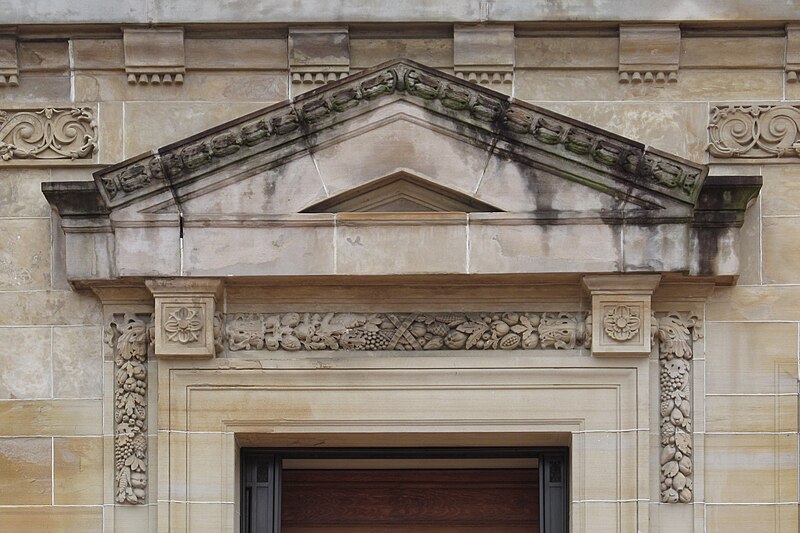
Some of the carved ornaments on Soldiers and Sailors Hall.
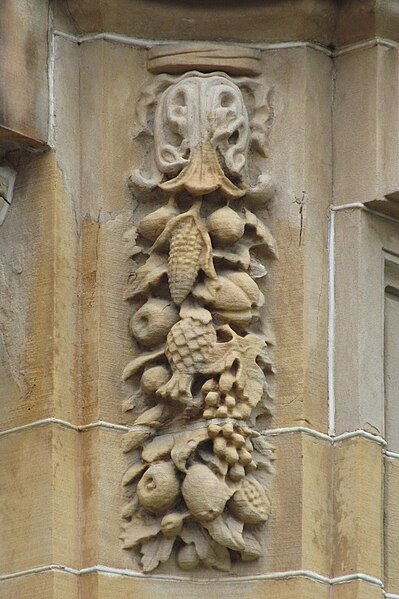


Seal of the City of Pittsburgh.

Henry Hornbostel imagined filling the University of Pittsburgh’s hillside site with classical temples, making a new Pittsburgh Acropolis that would be the envy of the intellectual world. The plan was never completed, because classical architecture went out of fashion too soon, and because it was supplanted by the even madder plan of putting a university in a skyscraper. But several of the classical buildings that remain on Pitt’s campus were meant to be part of this Pittsburgh Acropolis.
The image comes from an advertisement for Ruud water heaters, the amazing improvement in hot-water supplies that didn’t require servants to tend to a boiler.
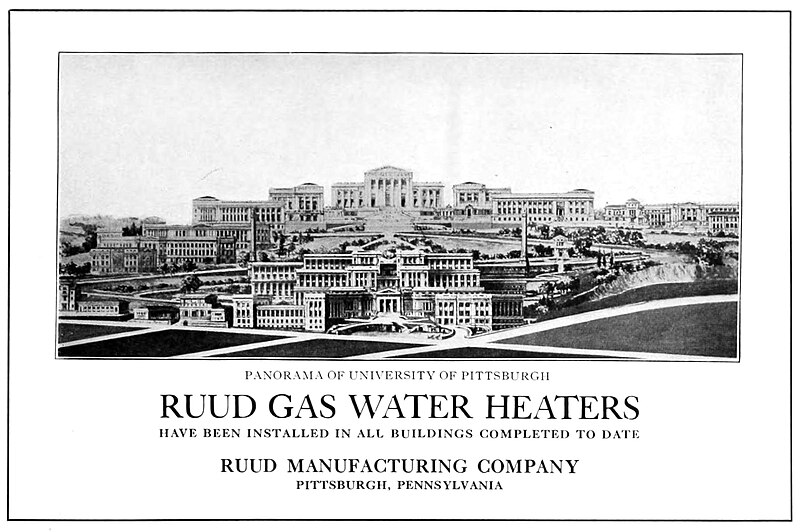

As you can see, it takes some effort to achieve this kind of symmetry in Pittsburgh, a city where the phrase “ground floor” is ambiguous at best. Pittsburgh’s premier women’s club hired Pittsburgh’s premier architect of clubs, Benno Janssen, to design this splendid Renaissance palace, built—according to the inscription—in 1930. The inscription also tells us that the club was founded in 1894. The rest (on the right) is the club motto: “Not for ourselves alone, but for the whole world.” The building now belongs to Pitt.
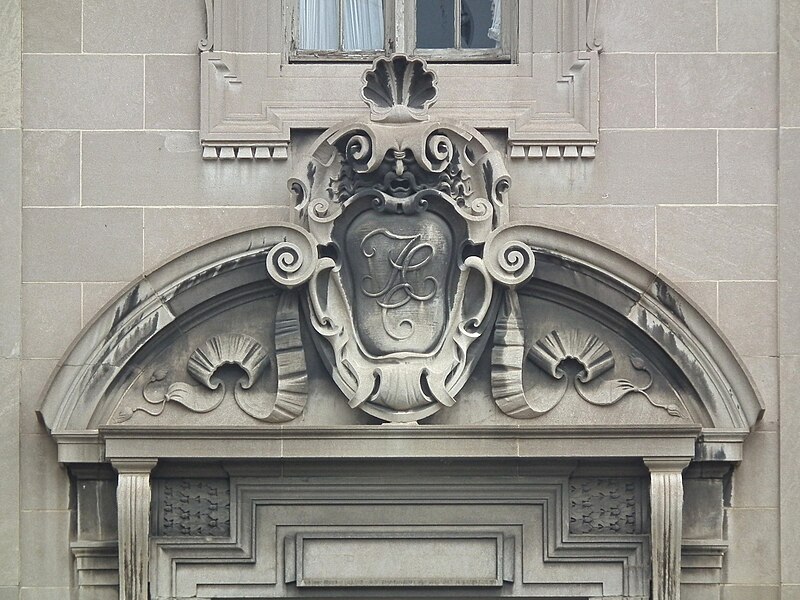
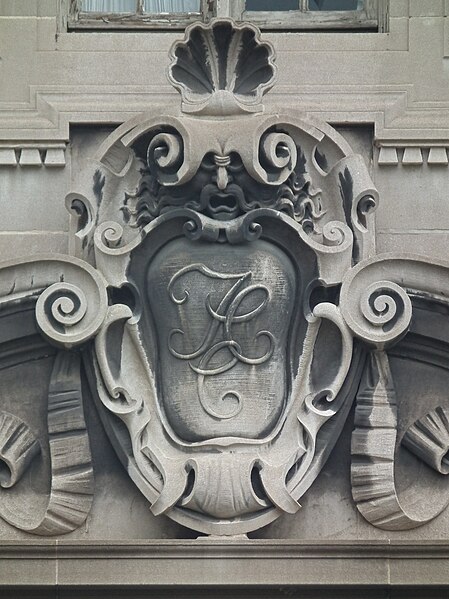
Janssen liked this kind of cartouche with monogram: compare his Young Men and Women’s Hebrew Association.
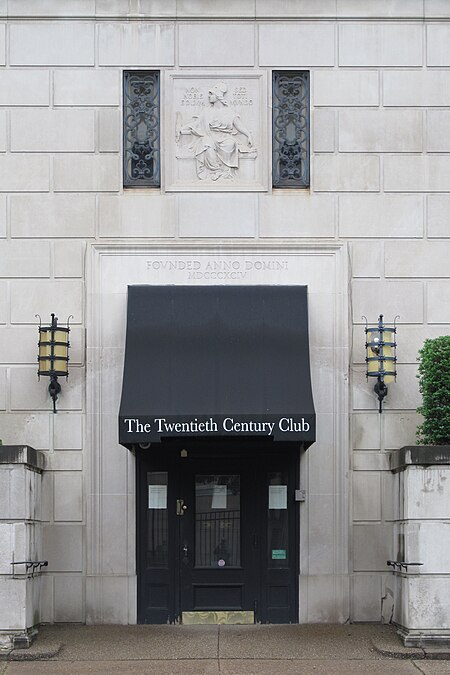
The entrance on the Bigelow Boulevard side, at lower ground level.
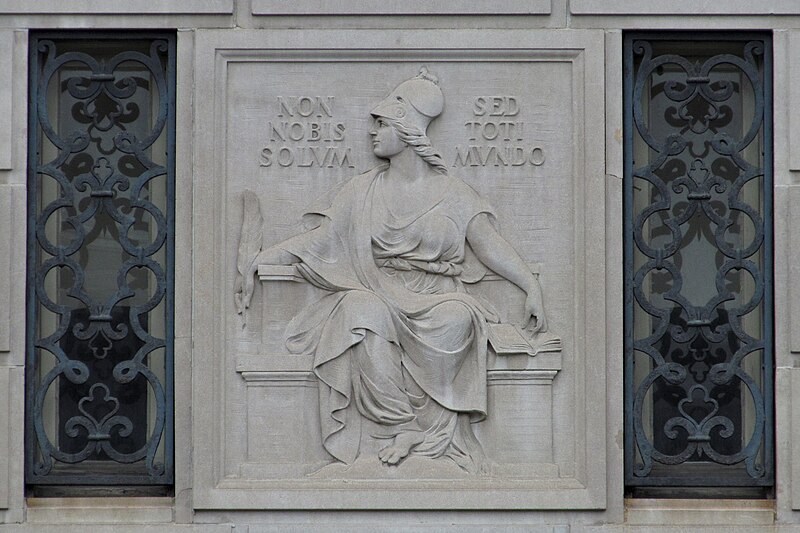
A relief over the Bigelow Boulevard entrance bears the club motto again. For context, here is an older picture from the corner of Bigelow Boulevard and Bigelow Boulevard (no one said navigating Oakland was easy); the lower entrance is behind the elegant stone wall.
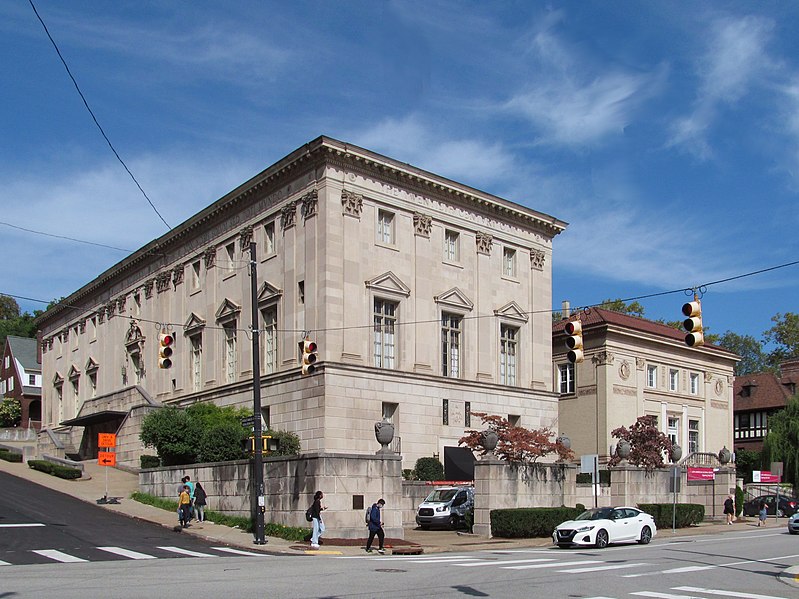

The interior of the P&LE terminal, now Pittsburgh’s most spectacular restaurant.
Addendum: According to the Inland Architect, the “quite elaborate” waiting room and stair hall were designed by Crossman & Sturdy, decorators, of Chicago. The architect of the building was William G. Burns, or possibly George W. Burns, depending on the source.

Thanks to a kind correspondent, old Pa Pitt has an opportunity to prove himself right about one thing and wrong about something else. Being wrong is almost as good as being right, because it means learning something new.
Our correspondent sent two pictures that appeared in an advertisement that ran in the Post-Gazette in 1929. The ad was for Frigidaire refrigerating systems, as used in prominent buildings in the city.
First, the Cathedral Mansions apartments on Ellsworth Avenue.
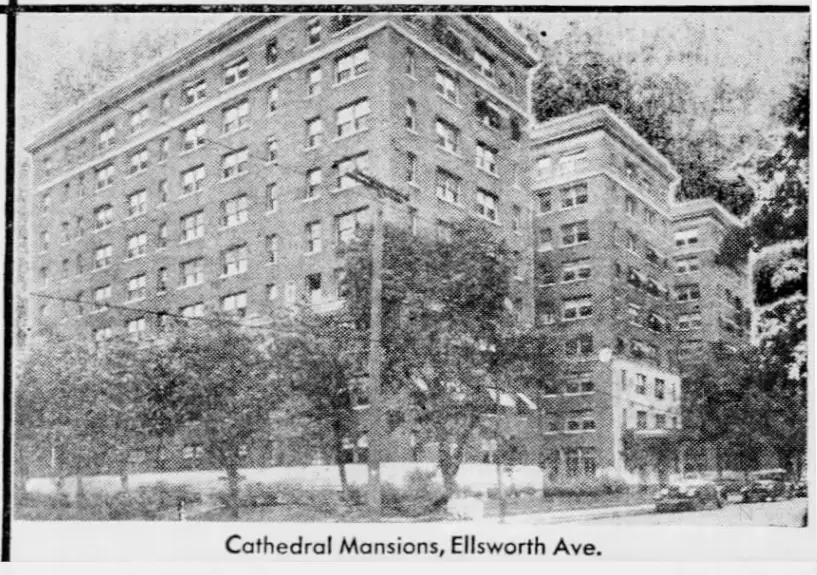
Here Father Pitt was right. A little while ago, we ran this picture of Cathedral Mansions as it looks today:

At that time we mentioned that we suspected it had lost a cornice. Father Pitt was right about that, as you can see from the 1929 picture.
Now, here’s the one we were wrong about:
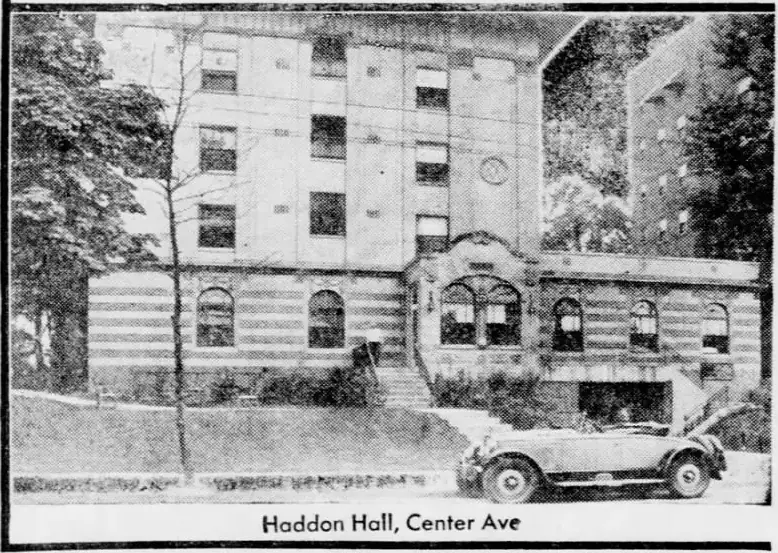
This building is now an apartment building called Hampshire Hall. As “Haddon Hall” it was a hotel with apartments. Here is what it looks like today:

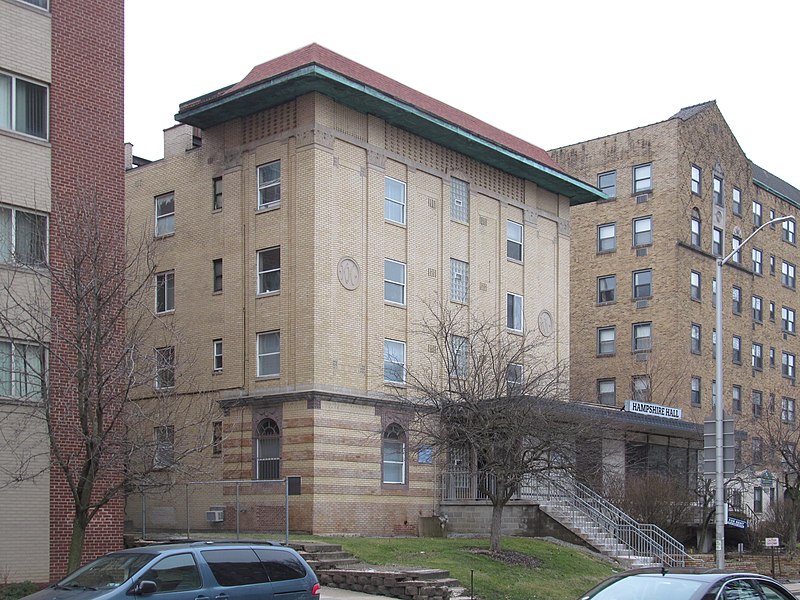
The obvious change is that modernist growth on the front. When he published these pictures, Father Pitt wrote, “It appears to be a glass enclosure for what was once an elegant verandah.” That is wrong. It seems to have been a replacement for the original dining room or lounge of the hotel. It was probably put there in about 1961: a newspaper ad from December 22, 1961, promotes the Walt Harper Quintet’s appearance at the “newly remodeled Haddon Hall Lounge.”
Many thanks to our correspondent for the pictures, which give us new information about these two notable buildings. If anyone knows the architect of either one, but especially Haddon Hall/Hampshire Hall (which is in a distinctive modernist-Renaissance style), Father Pitt would be grateful for the information.

Designed by Rutan & Russell, this was our first skyscraper hotel, and the most luxurious hotel in the city when it went up in 1898—at a time when it was actually at the edge of the urbanized area. It remained the Pittsburgh base of the rich and famous for half a century, but it declined after the Second World War, and in 1956 was sold to Pitt. It is now the William Pitt Union, with many of the exterior and interior details scrupulously preserved.





Addendum: See a picture of the Hotel Schenley in 1898, the year it was built.

Now part of the Conroy Early Childhood Center, this old school hovers between classical and Romanesque styles, which means that perhaps the best term for it is Rundbogenstil, the word old Pa Pitt most likes to pronounce in public.
Since it has been made an annex of a larger building, it no longer requires its main entrance, which leads to this architectural dissonance:

Addendum: The particularly fine inscription and relief work were done by Achille Giammartini, who lived a few doors down on Page Street.

Since we mentioned the smaller King Edward Annex a couple of days ago when we looked at the old King Edward Apartments, here it is. The city’s architectural inventory (PDF) dates it at about 1925 (Update: This is a little too early; see below), which seems plausible. It looks a bit worn, and the top of the building is definitely not the way the architect imagined it. But it still has a restrained dignity, especially if we ignore the missing cornice. Old Pa Pitt has a suspicion that average Americans simply don’t see the tops of buildings, so when they are mutilated no one but Father Pitt notices.

Addendum: The King Edward Annex was built in about 1927; the architects were Hannah and Sterling. Source: The Charette, Vol. 7, No. 2 (February 1927): “209. Architect: Hannah & Sterling, 209-9th Street, Pittsburgh, Pa. Owner Arthur McSorley. Title: Apartment House. Owner now taking bids. Location: Melwood Street, Pittsburgh. Approximate size: 28 apartments; four stories, fireproof. Cubage: 300.000 ft.”

The back entrance to the City-County Building would seem spectacular if we didn’t know what the front looked like. Below, the building seen from Ross Street.
